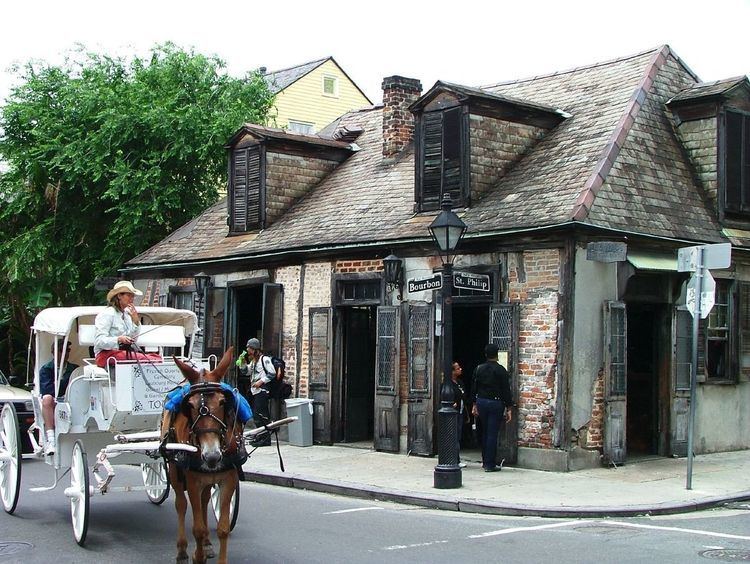Built 1722–32 Designated NHL April 15, 1970 Opened 1761 Architectural style French Colonial | NRHP Reference # 70000255 Designated NHLDCP December 21, 1965 Area 809.4 m² Added to NRHP 15 April 1970 | |
 | ||
Part of Vieux Carre Historic District (#66000377) Similar French Quarter, Jean Lafitte National Historical, Madame John's Legacy, Nicholas Girod House, The Cabildo | ||
Lafitte's Blacksmith Shop is a historic building at corner of Bourbon Street and St. Philip Street in the French Quarter of New Orleans, Louisiana. Constructed in the French/Spanish colony during the early 18th century, it is one of the oldest surviving structures in New Orleans and has been called the oldest structure in the U.S. housing a bar.
According to legend, the privateer Jean Lafitte (c.1780–c.1823), aka John Lafitte, owned a business here early in the 19th century. As with many things involving the Lafittes, such as possibly using this place to plot illegal seizures and the sale of contraband, no documentation exists. (It was only after the Lafitte brothers were long gone that Jean's signature was found on a document, finally ascertaining how their family name was spelled: LAFFITE.)
It is purported to be one of the more haunted venues in the French Quarter. The name Blacksmith Shop may not be coincidental. Lafitte's associates may have operated a smithy here during the days of reliance upon horses, who had to be shod. Jean's older brother Pierre Lafitte was a blacksmith, and their associate Renato Beluche may have once owned this building.
The current business traces its roots to Roger 'Tom' Caplinger, who in the mid-1940s turned the old abandoned shop into Café Lafitte. The cafe became a popular night spot that attracted a bohemian clientele, including the gay community and celebrities like Noël Coward and Tennessee Williams. However, Caplinger never held clear title to the property and the building was sold in 1953. He soon opened a second cafe at the other end of the same block named Café Lafitte in Exile, which maintains that it is the oldest gay bar in the U.S.
The building was declared a National Historic Landmark in 1970. It is a rare extant example of briquette-entre-poteaux construction.
In fiction
Lafitte's Blacksmith Shop is featured in the historical novel Anthony Adverse by Hervey Allen. As depicted in the novel, the blacksmith shop was mainly a cover for maintaining a gang of exceptionally tall and strong black slaves - who were ostensibly engaged in shoeing horses and in fact were used by the Lafitte brothers for intimidation, extortion and various other criminal activities in and around New Orleans.
